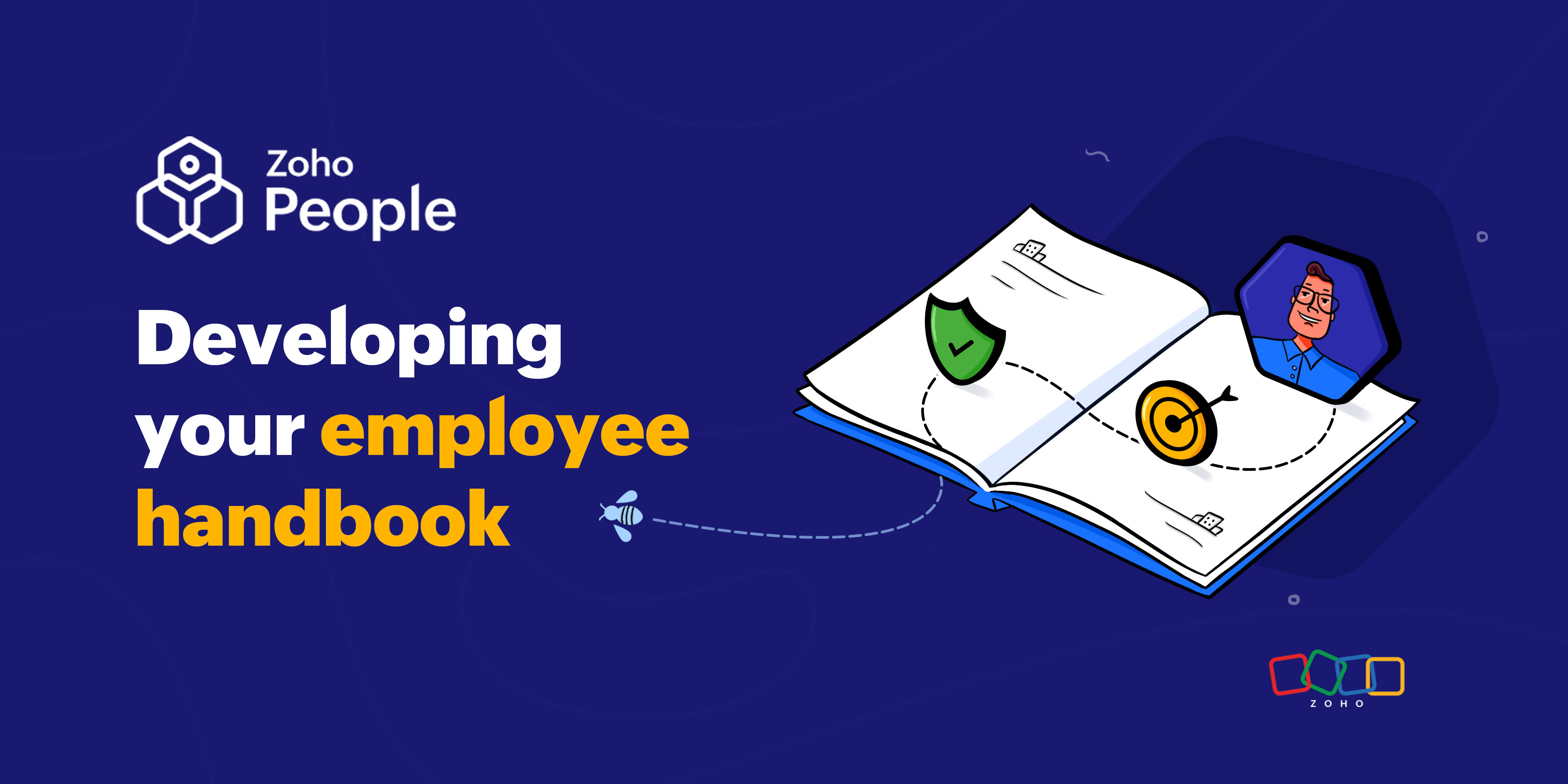- HOME
- HR insights
- What goes into an employee handbook?
What goes into an employee handbook?
- Last Updated : May 2, 2024
- 860 Views
- 4 Min Read

A comprehensive employee handbook enables your organization to put its culture and values into practice while helping your employees understand what is expected from them. It also helps your employees know what to expect from your organization in terms of management. With an employee handbook, you're better able to maintain compliance with labor laws, as it clearly communicates all of your company policies so you can enforce them more effectively. It's good to develop an employee handbook for your organization as soon as you start, but it's never too late. Here's a quick explanation of what employee handbook means and everything that has to go inside your employee handbook:
What is an employee handbook?
An employee handbook is a company document that allows organizations to document expectations for employees when it comes to codes of conduct. All crucial organizational information an employee has to know to conduct themselves in a proper way is outlined in an employee handbook. It's a comprehensive document that talks about the company mission, vision, long-term goals, key HR policies, working hours, employee rights, benefits, compensation, termination, and a lot more.
What goes into an employee handbook?
Mission, vision, and culture
To start off your employee handbook, it's good to include a little bit of history about your organization along with its mission and vision statements. Be sure to specify all that your organization stands for. This will help your employees understand what your organization intends to achieve, what its future looks like, and how they can be a part of that mission. When your employees find these details relatable, it'll give them a better sense of belonging. Have a welcome note from your CEO if possible, as it's a way to keep your employees motivated.
Everyday HR processes
Give your employees a clear idea of how each of your HR processes works and their related responsibilities. When it comes to recruitment, mention how you determine the need for new resources, what you look for in your candidates, how your selection process works, how referrals work, and how background verifications and onboarding happen. Specify employee working hours, and explain what will be counted as late. When it comes to attendance, be sure to mention how attendance is tracked, how overtime is calculated, how employees can request permissions, and how incorrect attendance entries can be corrected. If your organization works on shifts, be sure to specify your employees' shift timings, how shift rotations work, how they'll be notified when shift changes happen, and how they can submit shift change requests. When it comes to leave, define your different leave types, how much leave they are entitled to, and the process for applying for leave. Be sure to mention your holiday list too.
Also read:5 tips to draft your attendance policy
Workplace policies
Detail the different workplace policies that'll apply to your employees. For instance, in an anti-harassment and discrimination policy, you can provide definitions and examples. Mention how employees can report issues of harassment and discrimination and what the consequences if found guilty. In your data protection policy, you can define what makes data confidential and the steps that your employees can take to protect it. Under the same section, you could also list down the preventive measures and protocols your organization has established to ensure workplace safety.
Code of conduct
This section will help your employees get a clear idea about appropriate behavior at your workplace. If your organization's work involves regular in-person meetings with customers, it's a good idea to define a dress code for your employees. You can also specify how they are expected to use company-provided gadgets and email services. Define how your organization deals with workplace relationships, and specify expected behavior when it comes to social media and internet usage at work.
Compensations, benefits, and other perks
Be sure to discuss the compensation, benefits, and perks that you offer to your employees. If you have medical insurance coverage for your employees, be sure to provide details on the duration of the insurance, what treatments are covered, and the steps to make use of the insurance in case of an emergency. Have a few FAQs about the medical insurance as well, and mention if your employees are entitled to receive any compensation if there is an accident in the workplace. Further, offer detailed information about how promotions and salary hikes work at your organization and who qualifies for them. Provide details on remote work, bonuses, gift cards, rewards, and fuel reimbursement if you provide these perks.
Also read:Everything you need to know about employee compensation and benefits
Resignation and termination
Detail the procedure that's involved in case an employee wants to resign. This includes the notice period, how and when they're expected to submit their resignation letter, and how the knowledge transfer process works. Further, elaborate on what leads to termination and how termination is handled. Provide information on what managers have to do if they want to terminate an employee.
Developing a comprehensive employee handbook
A comprehensive employee handbook can play a significant role in helping your organization prevent conflicts, set clear expectations for employees, and ensure compliance with various labor laws. It enables your employees to be consistent with your company's mission, vision, and goals. We hope this gave you a clear idea of what to include in the employee handbook.
 Tarika
TarikaContent Specialist at Zoho People


